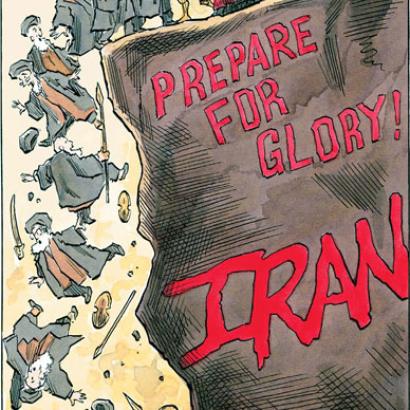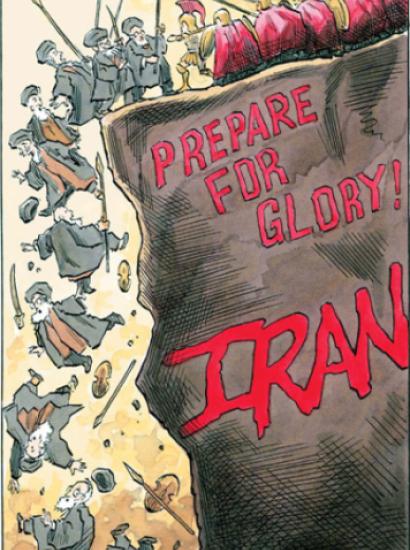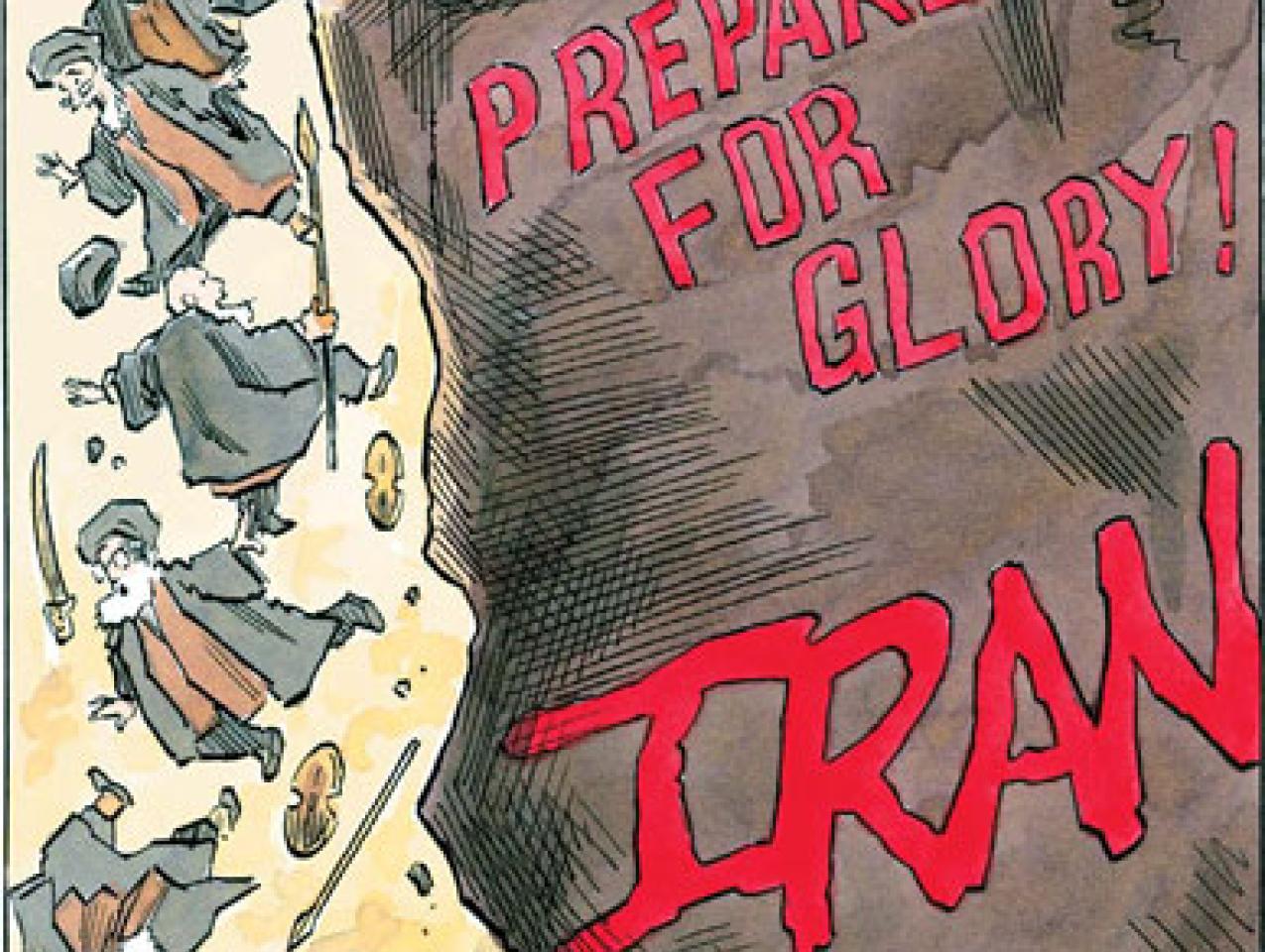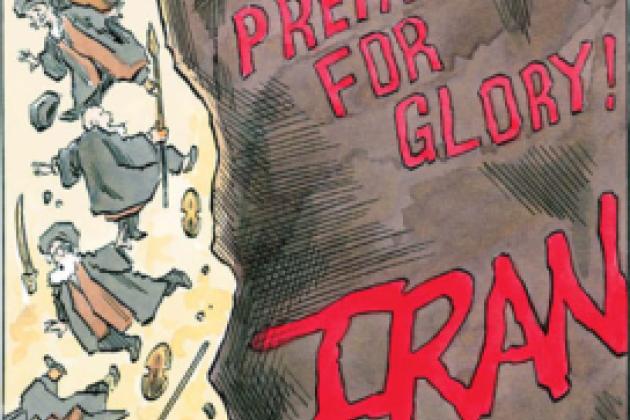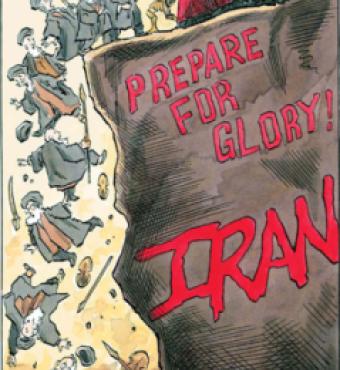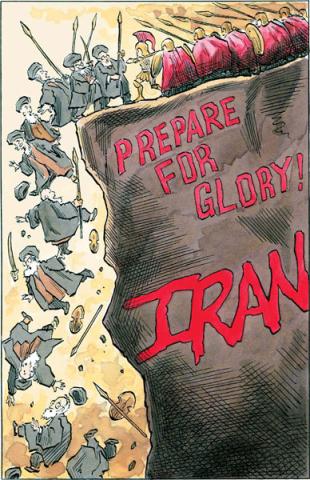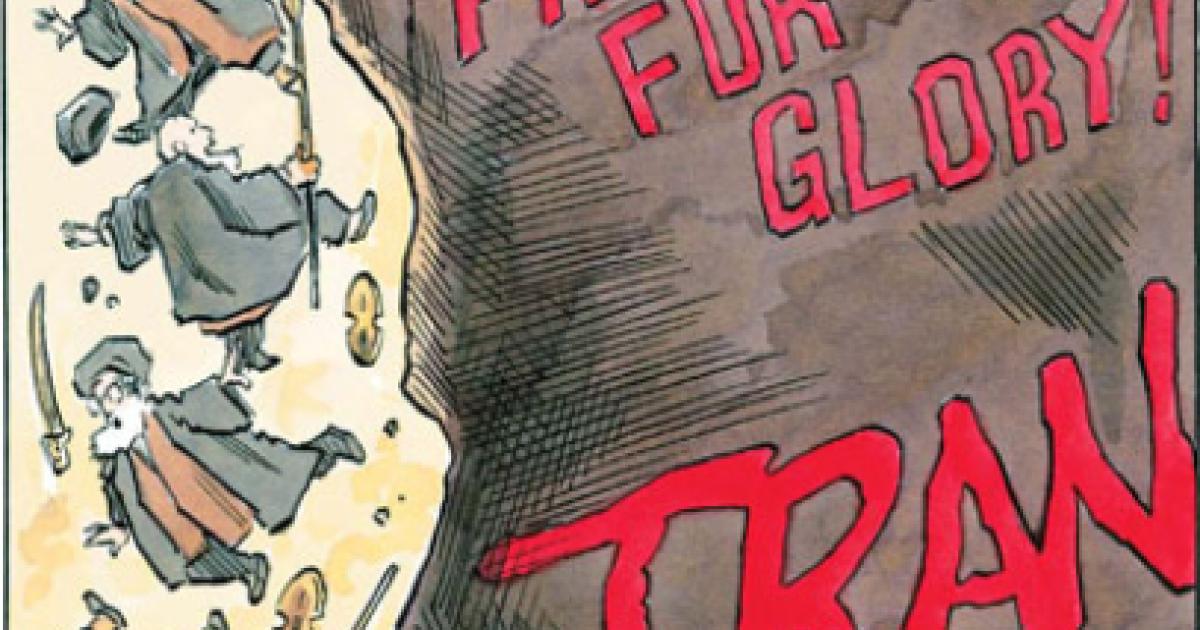If a no-nonsense Greek infantryman holding the pass at Thermopylae were to be told that, 2,500 years in the future, Western constitutional states would still be facing an apocalyptic struggle with a totalitarian government in Persia, he would hardly be surprised.
Persians, or Iranians as they’re called today, have been at odds with both the West and neighboring Asians since antiquity—and over the same recurring issues of freedom versus autocracy. In that sense, the bumper-sticker anti-Americanism of Mahmoud Ahmadinejad is nothing new. Neither was Ayatollah Khomeini’s virulent hatred of the Great Satan.
Darius I incorporated most of the Greeks of Ionia under the Persian Empire and would have done the same in mainland Greece had the Athenians not stopped him at Marathon in 490 bc. A decade later, his son Xerxes invaded Greece with a half-million infantrymen and sailors through the pass of Thermopylae, the setting for the recent hit movie 300, only later to be ruined at Salamis and Plataia by the Athenian-Spartan alliance.
Westerners—including Xenophon’s Ten Thousand, the Spartan King Agesilaos, and Alexander the Great—sought payback against the imperial Achaemenids, who ruled over a Persian Empire that stretched from what is now Pakistan through Saudi Arabia to Egypt and north into Turkey. By Roman times, long after the fall of the Achaemenid kings, the Parthians—another Persian dynasty—continued the East-West struggle, destroying Crassus and nearly his entire Roman army at Carrhae. The subsequent Sassanid Persians constantly fought the Byzantine Greeks for control of Anatolia and the Levant, before themselves falling to the wave of Arab Islamic invaders.
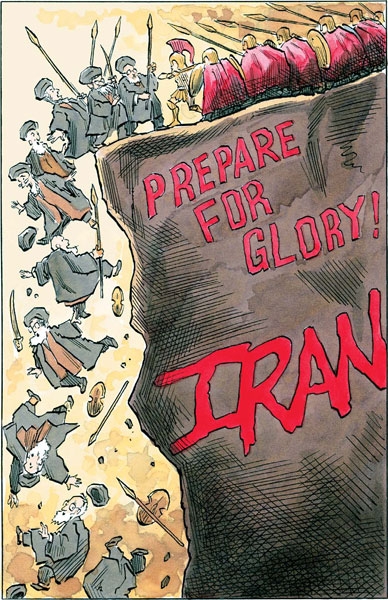
Iran’s location explains much of this violent history. It is not only a bridge from the Orient to the West but also a north-south clearinghouse between Russia and the Arab world. The Strait of Hormuz currently forms the bottleneck for global petroleum commerce, but even in the age of sail, the narrow sea passage always served as a means for Iranians to shut off all entry into the nearby Persian Gulf.
In light of the long Persian-Western friction many critics, in panning 300, alleged that the movie was biased against the Persians, not to mention historically inaccurate. It was actually banned in Iran as hurtful American propaganda that demonizes Persia, as the theocracy suddenly moved to reclaim its glorious “infidel” ancient past. President Mahmoud Ahmadinejad accused the movie of serving as a U.S. tool in the present standoff over Iranian nuclear proliferation, apparently oblivious to the irony of his own link to an era 2,500 years ago when another Persian autocrat saw Western democracies as his natural enemies.
A few words about the historical accuracy of 300. The cinematic view of the Battle of Thermopylae in 480 bc—the Greek effort to stave off the Persian invaders in a narrow chokepoint—is an impressionistic take on a graphic novel by Frank Miller, intended to entertain and shock first, and instruct second, using many of the conventions of the modern comic book. There were no rhinoceroses or elephants on the real battlefield, for example, and King Xerxes was more dignified and remote than his depiction in the movie. But the violence was real. And Greek defenders did claim that their fight was for the survival of a free people against subjugation by the Persian Empire—that good/bad contrast in 300 comes not from the director Zack Snyder or from Miller but directly from the accounts of the Greeks themselves, who saw their society as antithetical to a monarchy that had little freedom of speech or consent of the governed.
And many of the “comic book” moments of the film come straight out of history. The Spartan dare “Come and take them,” when ordered by the Persians to hand over their weapons, or the Spartans’ flippant reply “Then we will fight in the shade,” when warned that Persian arrows will blot out the sun, are taken from ancient accounts by Herodotus and Plutarch, who both saw the defiance of the Spartans as key to the Greek defense. And the film’s impressionistic mode of storytelling was not outlandish: Athenian tragedies that depicted stories of war employed contrivances every bit as imaginative as those in 300: masks, men in women’s roles, chanted lines, choral hymns. The audiences understood that dramatists loosely reworked common myths to meet current tastes and offer commentary on the human experience.
So 300 underscores themes long woven into the checkered history of Iran and the West. Fairly or not, Westerners have always viewed their relations with Persia in terms of freedom versus despotism, of individual citizens at Thermopylae fighting the coerced hordes of Xerxes’ subjects. Roman poets likewise depicted Romans fighting Parthians as free-minded Western infantry battling treacherous nomadic horsemen who shot arrows even as they seemed to ride away.
Some, such as the literary scholar Edward Said, claimed that such antitheses in our ancient and modern sources were concocted—a prejudice Said dubbed “orientalism”—reflecting more Western bias than real differences in values. But there was no consensual government in ancient Persia and very little there since—in contrast to a long Western tradition from the Greek polis and Roman republic through the Magna Carta and Italian city-states to our own Founding Fathers. And if most of our information about these two very different cultures comes from Western authors, it is precisely because only in the West was the individual largely free to write and speak about what he saw and thought.
Religion, too, has been an old fault line. Zoroaster, founder of ancient Persia’s religion 600 years before Christ and a millennium before Muhammad, painted a binary world of light against darkness in an apocalyptic and all-encompassing belief system—a view not all that antithetical to subsequent Shiite Islam’s emphasis on struggle and martyrdom. Persians, it seems, have their own good-versus-evil story. They have always embraced religion in terms of believers against all the rest—without the pacifism of the Sermon on the Mount and “turn the other cheek” of the New Testament.
Then again, Iranians have some reason to be paranoid about foreign interventionists and intriguers. We hear much from them today about the “den of spies” in the U.S. embassy 30 years ago, about the 1953 Anglo-American overthrow of the popularly elected Mohammed Mosaddeq, and about the joint Russian-American virtual takeover of Iran in 1941.
Much of President Ahmadinejad’s apparent domestic appeal stems from his posture not just as an Islamist who takes on Israel on behalf of the Palestinians but also as a leader who seeks to restore both a Persian and a Shiite claim to Muslim greatness. The efforts of Iran to undermine the Iraqi government, overturn Lebanese democracy, finance Hezbollah, and use Syria to balance the Persian Gulf sheikdoms are not so different from the shifting alliances and intrigue that enabled Cyrus the Great to cobble together the first Persian Empire.
So is Western conflict with Ahmadinejad’s restive Iran inevitable?
Not exactly, because there have also been periods of realist engagement between Persians and Westerners. Just as the historian Xenophon, in the fourth century bc, believed that Cyrus the Younger was a pro-Western reformer who might bring Persia into the sphere of the Hellenic world, so, too, the modernizing Shah Reza Pahlavi and the reformer Mosaddeq in contrasting ways both wanted Iran to incorporate ideas from the West.
Long after Ahmadinejad and the Iranian theocracy are gone, a powerful and proud Iran will still emulate and rival, still befriend and distrust Westerners—captive to a history that is as illustrious as it is volatile.








